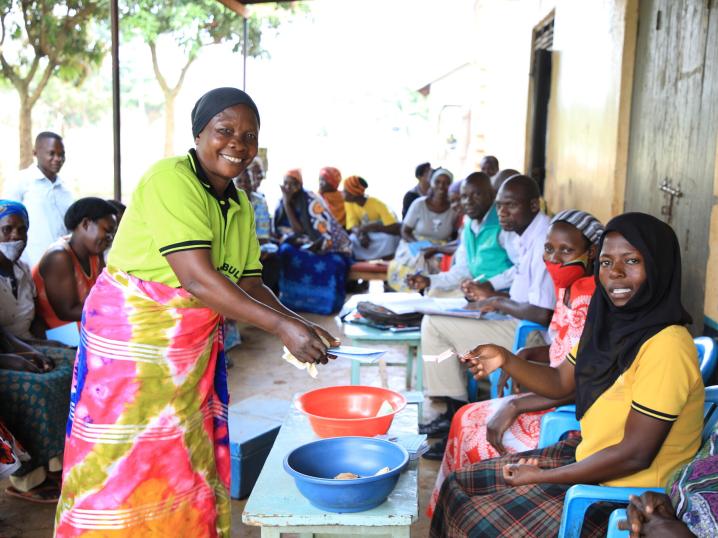International Women’s Day: Breaking the Bias

Written by Kaitlin McGarvey, North America Fundraising Manager, VisionFund International
This International Women’s Day’s theme is “Break the Bias.” This year’s campaign calls us to:
Imagine a gender equal world.
A world free of bias, stereotypes, and discrimination.
A world that is diverse, equitable, and inclusive.
A world where difference is valued and celebrated.
Together we can forge women's equality.[1]
There are several ways that VisionFund works to break the bias for clients and staff alike. This blog post focuses on VisionFund clients, while the other blog focuses on VisionFund staff.
Breaking the Bias: Serving the Most Vulnerable
VisionFund is a mission-driven organization that is committed to serving the most vulnerable people at the bottom of the economic ladder – people other financial institutions shy away from.
A majority (80%) of people living below the international poverty line reside in rural areas, even though the rural population accounts for less than half of the global population. Women and girls are overrepresented among the poor in many regions of the world, especially where World Vision works[1] with nearly 1 billion unbanked women globally.[2]
For many of these almost 1 billion women globally who have no access to financial services, it means that their money is not. protected, they have no access to savings or checking accounts, or financial products like insurance, credit facilities and loans…One of the core reasons why women face this problem is due to the lack of a formal identity…One in five unbanked women globally cite lack of a formal ID as a reason they do not have a formal bank account.[3]
To truly end extreme poverty, we need to successfully serve the most economically vulnerable – rural women.
Currently, 69% of VisionFund’s clients are women and 64% of our clients live in rural communities. While these figures are great, VisionFund has committed to strategically and intentionally increase the number of rural women we serve through FAST: Finance Accelerating Savings Group Transformation.
For the rural poor, access to financial services is severely limited; however, joining a savings group is a proven method to generate savings, credit and resilience for economic strengthening. Through FAST, VisionFund is providing loans of up to US $1,000 to mature savings groups that have a financial foundation and two years of experience saving and lending to one another.
The average savings group has 22 group members, a majority of whom are women (72% on average). With an average FAST loan size of $800, VisionFund is able to provide financial services to our FAST clients for approximately $36 a person – one of the smallest microloans provided by any microfinance institution.
By providing loans to savings groups rather than individual clients, group members do not need to have formal IDs or the other pre-requisites they might need to acquire loans from other financial institutions. In fact, a recent third-party evaluationfound that 87% of FAST clients in Malawi said they had no financial alternative to FAST,[4] meaning we are truly serving clients few other institutions would consider working with.
By focusing on small group loans, we’re able to scale the number people we’re serving at the bottom of the economic ladder, and break the bias that prevents the rural poor from accessing financial services. Currently, about 90,000 people (9% of client portfolio) have benefited from FAST. VisionFund’s 2030 strategy, Our Livelihoods Promise, establishes VisionFund’s goal of increasing our FAST client-base to 20%[5] of our future portfolio.
Ensuring we’re strategically targeting rural women through our programming is only one piece of the puzzle. We also need to ensure we’re breaking the bias within our own workplace. Read how we’re doing that here.
[1] https://www.worldbank.org/en/topic/poverty/overview#1
[2] https://globalfindex.worldbank.org/
[3] World Economic Forum. “Tech can reach the world's unbanked women – but only if they tell us how it should work”
[4] https://www.visionfund.org/sites/default/files/2021-12/2021%2060dB%20%40%20VisionFund%20Malawi%20Report..pdf
[5] An estimated 2,000,000 people by 2030